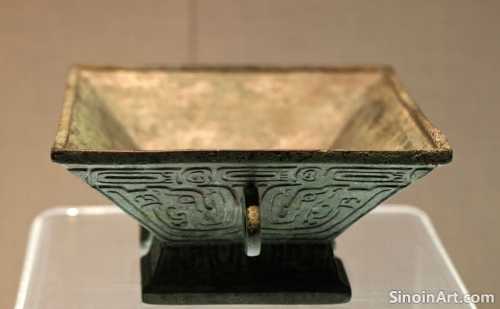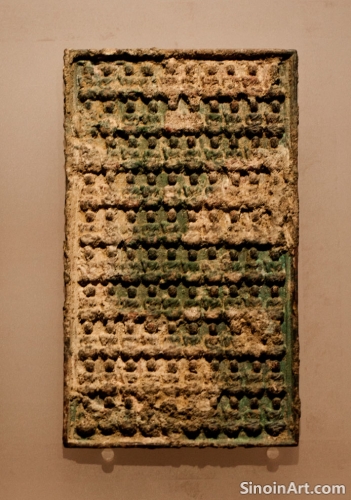Bronze Ware and Ancient Chinese Beliefs About Immortality: The Quest for Everlasting Life
|
The creation and use of bronze objects in ancient China were often intertwined with a desire for immortality and a belief in the possibility of an existence that transcended the mortal realm. The use of bronze in funerary contexts and in the creation of objects that possessed both spiritual and symbolic power reflects a deep seated desire for an eternal existence. The connection between bronze and the quest for immortality provides a fascinating insight into the ancient Chinese perspective on life, death, and what lies beyond.  Bronze mirrors, which reflected light and were believed to hold spiritual power, were often placed in tombs, and were thought to help guide the souls of the deceased into the afterlife and perhaps even to enhance the possibility of their rebirth into a new and more enduring life. The power of reflection was thought to have a metaphysical significance.  Bronze vessels, which were designed for ritual use, were often included in burials, as it was believed that these items could also sustain the deceased in the afterlife, and provide them with everything that they needed to continue into the next world. The inclusion of items from their daily lives indicates a desire to maintain continuity and to enhance their overall wellbeing in the world of the spirits.  The depiction of mythical creatures and other symbolic motifs on bronze objects also suggested a belief in the power of these images to protect against harm and also to help to facilitate the soul’s passage to a new and more perfect existence. The imagery helped to create a sense of both protection and power. These symbols and images helped to represent the complex understanding of life, death, and the spirit world. The study of bronze and its association with immortality reveals a fascinating aspect of ancient Chinese beliefs and culture, highlighting the human desire for transcendence and the ways in which people have sought to achieve some form of continuity beyond death. The artifacts from the past help to connect us with this longing for immortality. The combination of art, ritual, and belief is key to understanding the power of this worldview. |
Tag : bronze immortality, Chinese afterlife, eternal life beliefs, funerary rituals, spirit world
Related information
- The Legacy of Zhou Dynasty Bronzes: Shaping Later Chinese Ritual and Culture
- Bronze Ware and the Ancient Chinese Understanding of Material Science: Alloys, Properties, and Applications
- The Social and Political Significance of Bronze Mirrors in Ancient China: Status, Reflection, and Self-Presentation
- Bronze Ware and Ancient Chinese Philosophy: Exploring the Connection Between Material Culture and Intellectual Thought
- Bronze Ware and the Development of Ancient Chinese Technology: Innovation and Practical Applications
This article explores the lasting legacy of Zhou Dynasty bronzes, highlighting their influence on later Chinese ritual practices, their impact on subsequent artistic designs, their role in the development of historical records, and their contribution to a continued reverence for tradition.
This article explores the connection between bronze ware and ancient Chinese material science, highlighting the understanding of alloys, their properties, and their applications, and demonstrating the technical expertise of the ancient metalworkers.
This article explores the social and political significance of bronze mirrors in ancient China, highlighting how they were used to express status, manage self-presentation, and reflect the complex interplay of individual identity and social hierarchies.
This article explores the connection between bronze ware and ancient Chinese philosophy, highlighting how Confucian, Daoist, and Legalist ideas influenced the forms, designs, and symbolic meanings of these objects, demonstrating the interplay between material culture and intellectual thought.
This article explores the role of bronze in the development of ancient Chinese technology, highlighting its use in agriculture, irrigation, and warfare, and demonstrating how the material enhanced practical and technical capabilities.